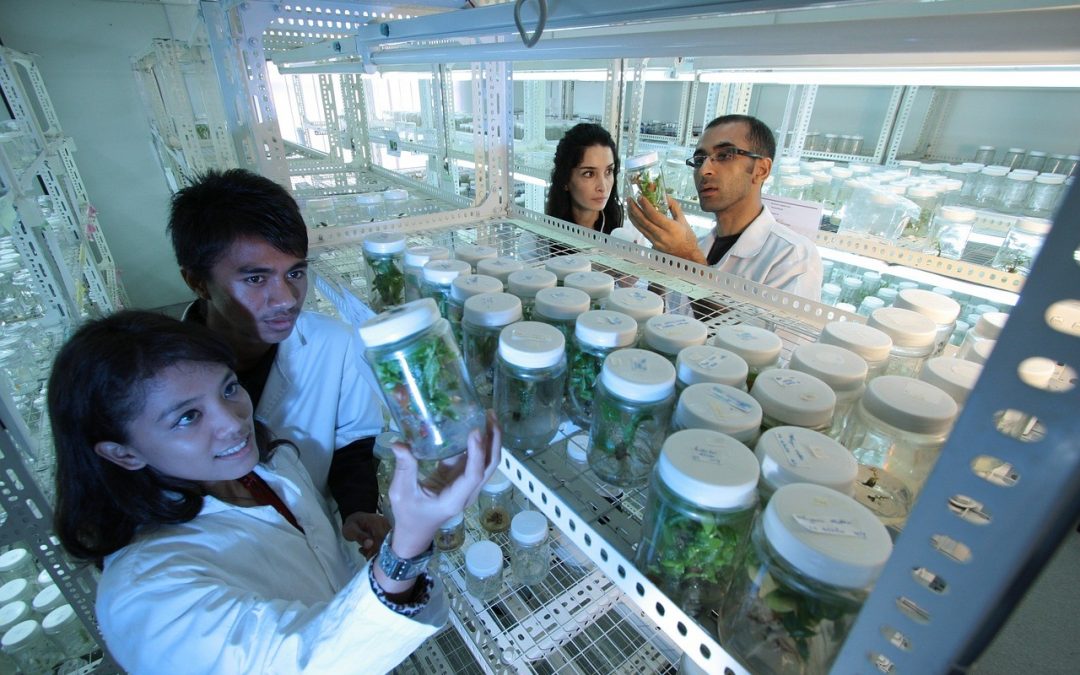Consumers are more enticed to purchase a cosmetic or personal care product that displays the word ‘natural’ or ‘organic’, or a product that is known to contain ingredients from a sustainable source. This growing desire from consumers has led the cosmetic and personal care product industry to shift towards using ingredients from nature’s organisms as both active and inactive ingredients. However, just because an ingredient is naturally occurring, does not mean it is sustainable. For an ingredient to be sustainable, it must be obtained from a resource in a way that the ingredient will be available indefinitely. This led the cosmetic industry to begin using biotechnology, the use of a biological processes for industrial purposes and genetic manipulation of microorganisms.
Green biotechnology is a method of genetically modifying plants to be more prosperous while maintaining a minimal environmental impact. Green biotechnology has been increasing in the agriculture industry in the twenty-first century, but recently the cosmetic industry has begun using these methods to grow their natural ingredients. For example, Givaudan Active Beauty has partnered with BIO-FD&C to use green biotechnology to produce two new actives, k-phyto [SC] Camellia and k-phyto [PP] GHK. K-phyto [SC] Camellia is obtained from camellia phytoplacenta cells and is beneficial in scalp products as the active has been proven to aid in scalp moisture retention and reduces dry flakes and dandruff. K-phyto [PP] GHK combines botanicals and peptides and acts on sebum production mechanisms, making it perfect for products for oily skin. These actives are a prime example of making a more effective product while also appealing to consumers by using natural ingredients without disrupting the environment.
Blue biotechnology is a process of combining genetic engineering and cultivation techniques for mass production of marine organisms without impacting the ecosystem. Such organisms include bacteria, invertebrates, algae, and fungi. These marine sourced ingredients are better than terrestrially sourced ingredients as they are more active, have different properties, and different mechanisms of action. These ingredients allow products to contain photoprotection, moisturization, anti-ageing, and skin-whitening properties. By using blue biotechnology to source these materials, the marine ecosystem is protected from over-fishing and unnecessary ocean farming. There are seven million species living in the sea, and many more are unknown. The goal is to obtain samples of as many of these effective ingredients to begin farming them in a sustainable way.
In order to further biotechnology’s applicability to the cosmetic and personal care product industry there are some challenges that need to be solved. For example, obtaining the original sample to begin the process requires a large amount of financial support. Additionally, as biotechnology grows and develops, government must also develop and adapt their financial support, legislations and guidelines to support the industry and to protect marine ecosystems. As biotechnology develops, its applications expands into other industries, such as natural health products and pharmaceuticals. It will be interesting to see where this and future biotechnologies take us.
For more information, please contact Focal Point Research Inc. We are leading North American Regulatory and New Product Consultants for Medical Devices, Natural Health Products, OTC Drugs, Cosmetics, and other consumer products regulated by Health Canada and the U.S. FDA
Emily Campbell


Recent Comments